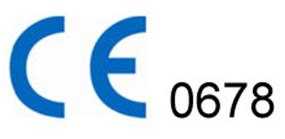R & TTE
date:2023-04-08 15:50:35
Certification Mark

Introduction of certification
As for wireless remote control products and communication products, they must comply with the REQUIREMENTS of THE R&TTE Directive (Radio and Communication Terminals Directive) -1999/5/EC.
The products covered by the R&TTE directive are:
Short distance wireless remote control products (SRD) such as: remote control toy car, remote control alarm system, remote control doorbell, remote control switch, remote control mouse, keyboard, etc.
Professional radio remote control products (PMR) such as professional radio intercom, wireless microphone, etc.
Corded telephone, fax, MODEM, answering machine, PABX
Cordless phone CTO, CT1, CT1+...
ISDN (Digital Telephone Products)
DECT (Enhanced Digital Cordless Telephone)
GSM, CDMA...
Bluetooth products such as Bluetooth headphones.
For radio and communication terminal products, test certification includes:
Electromagnetic compatibility test EMC
Safety test LVD (new instruction also requires this test for battery input RF products)
Conduct radio communication equipment testing (RF testing) according to European ETSI standards
Notification of Permitted Spectrum in Europe
CTR (TBR) test
Electrical Safety and Health Protection Testing (SAR Assessment)
Regulations on wireless products entering the Eastern European market
Since 1 May 2004, the European Community has added 10 member States, including Malta, Slovenia, Cyprus, Slovakia, the Czech Republic, Poland, Hungary, Lithuania, Latvia and Estonia, and the R&TTE directive will therefore be extended to these new member States. Before communication terminals and wireless products can be legally sold in these countries, they must be tested and approved in accordance with the R&TTE directive, and they must also have a CE-mark.
When wireless products are to be sold within the European Community, certain details must be taken into account. Because the member states of the EU have historically developed independently, each country may have a different range of spectrum to open up, so some bands still need to be harmonized within the EU. Fortunately, in the meantime, there are many spectrum bands that are already harmonized in old EU member states. However, wireless products designated for use outside the harmonised band -- so-called Class 2 equipment -- must go through a prescribed notification process. Through reporting, the equipment wholesaler (or manufacturer) notifies the frequency authority of the member State that the product is intended to be marketed in that country. The competent authority has 4 weeks to raise objections, and if there is no objection during this period, the product will be marketed in those countries. Product, packaging and documentation attached to the product must clearly state operational restrictions. In addition, ce-Mark and alert-symbol must be attached to the product and package.
The enlargement of the European Union has had a great impact on wireless products. That is because certain bands that were harmonised in the old EU (before 1 May 2004) may now lose their harmonised character as they may be used for other purposes (such as military and police channels) in the new Member States. Unfortunately, so far, there has been no solution to these problems.
The European Commission's Enterprise Directorate General recommends that the current product classification be used as the benchmark for launching products. That is, Class 1-equipment can be sold in all EU member States without any additional notification, according to the decree. On the other hand, the second category (Class 2-equipment) is subject to a registration process before it can be sold on the market. Responsible manufacturers intending to sell category II wireless products in the markets of new Member States are required to notify the respective frequency authorities, the procedure for notification under the R&TTE Directive. If there is no objection from the competent authority within the specified four weeks, the product may be introduced into the local market. But if there is a disagreement, the European Commission's Enterprise Directorate General will request the same data to review the product to make sure the problem is resolved as quickly as possible.
The European Union's Enterprise Directorate General will launch a web page in June to answer wireless classification questions in time. In the coming months, there will be some hurdles in the way of communications and wireless products entering the European market. The European Commission authorities are aware of these difficulties and have pledged to make every effort to provide the necessary assistance in these cases in a non-bureaucratic and expeditious manner.
The European Communications Ministry's portal website www.ero.dk provides complete information on eu regional harmonized bands and category I products. Its professionals are happy to help your products enter the European market as well as other regional markets throughout the world.

